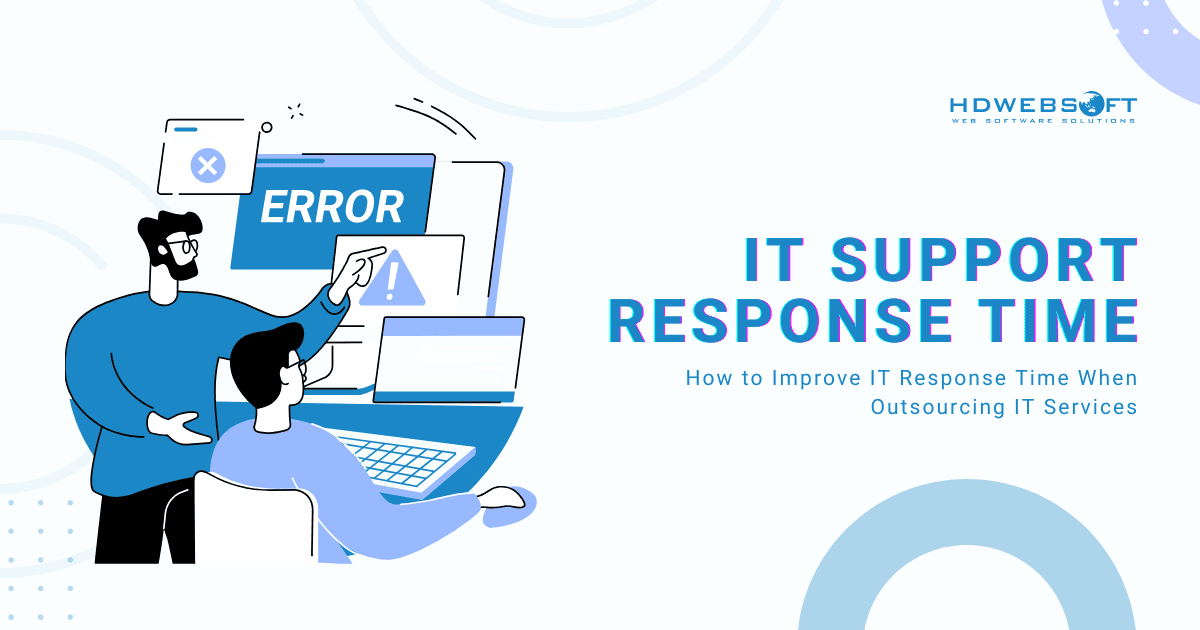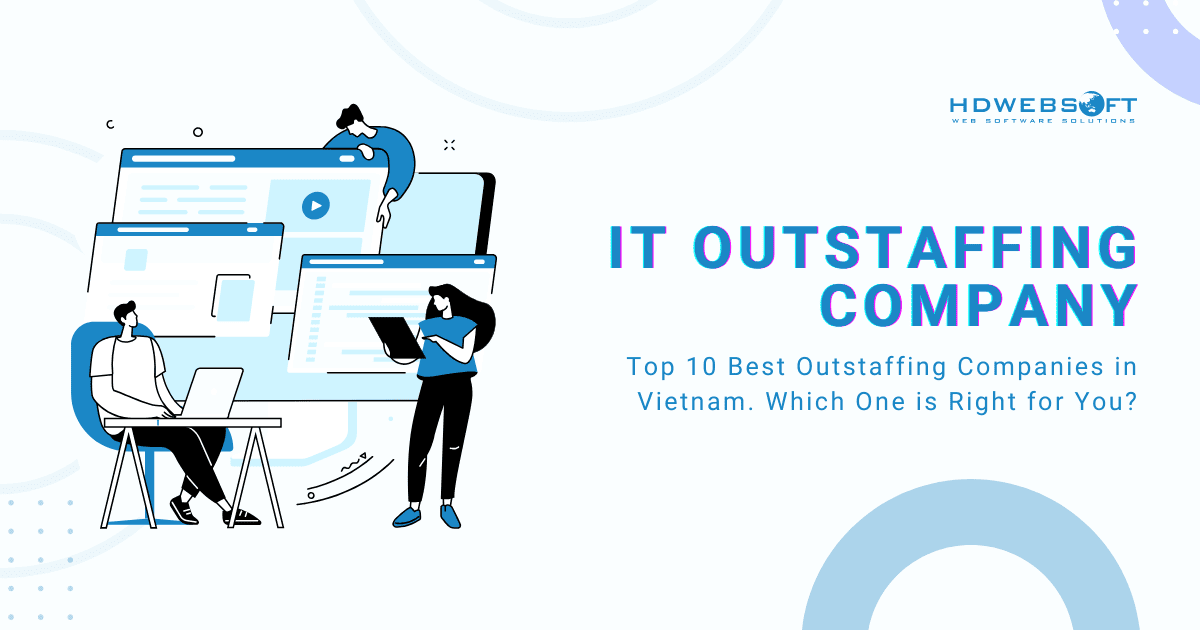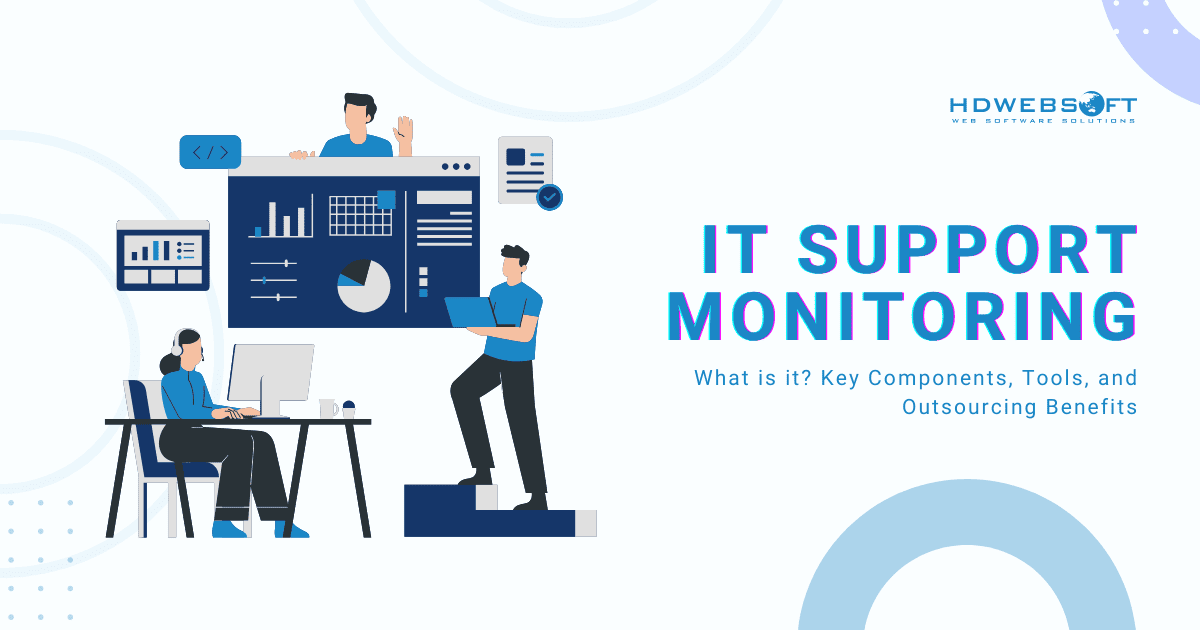
What is IT Support Monitoring? Complete Guide to Components and Benefits
IT support monitoring has become the backbone of successful business operations in today’s digital landscape. In fact, recent studies reveal that unplanned IT downtime costs businesses an average of $5,600 per minute. Hence, organizations that implement IT monitoring services experience 70% fewer critical system failures compared to those relying on reactive approaches.
As businesses increasingly recognize these benefits, many are turning to IT support outsourcing to access advanced monitoring capabilities without the overhead of building internal teams. This strategic shift from reactive “break-fix” models to IT support with proactive monitoring represents one of the most significant evolutions in modern IT management.
Throughout this comprehensive guide, you’ll discover the fundamental components of effective monitoring systems and explore the latest tools and technologies. Furthermore, you’ll learn how outsourced IT monitoring can transform your business operations while reducing costs and improving reliability.
What is IT Support Monitoring?
For starters, IT support monitoring refers to the continuous observation and analysis of an organization’s technology infrastructure. The goal is to ensure optimal performance, security, and availability. Unlike traditional reactive maintenance approaches, this proactive methodology focuses on real-time tracking of networks, servers, applications, and end-user experiences. As a result, it helps identify and resolve issues before they impact business operations.
The IT Support Monitoring Evolution
At its core, network monitoring encompasses both automated surveillance systems and human oversight to maintain system health. This approach has evolved significantly from the outdated break-fix model, where IT teams would only respond after problems occurred.
Instead, modern IT support leverages sophisticated tools and analytics to predict potential failures and address them preemptively.
Difference between monitoring and maintenance
The distinction between monitoring and maintenance is crucial to understand. While maintenance involves scheduled activities to keep systems running, proactive IT support monitoring provides continuous visibility into system performance, enabling immediate response to anomalies. This real-time approach differs from periodic monitoring, which only provides snapshots of system status at specific intervals.
Connection to outsourced IT support services
Moreover, IT support with proactive monitoring serves as the foundation for effective outsourced IT support strategies. It allows external providers to deliver consistent, high-quality services regardless of time zones or business hours. Thus, this capability has become particularly valuable as organizations increasingly rely on cloud-based infrastructure and distributed teams.
Here, we’ve reinforced the key difference between old and new approaches with concrete comparisons for you:
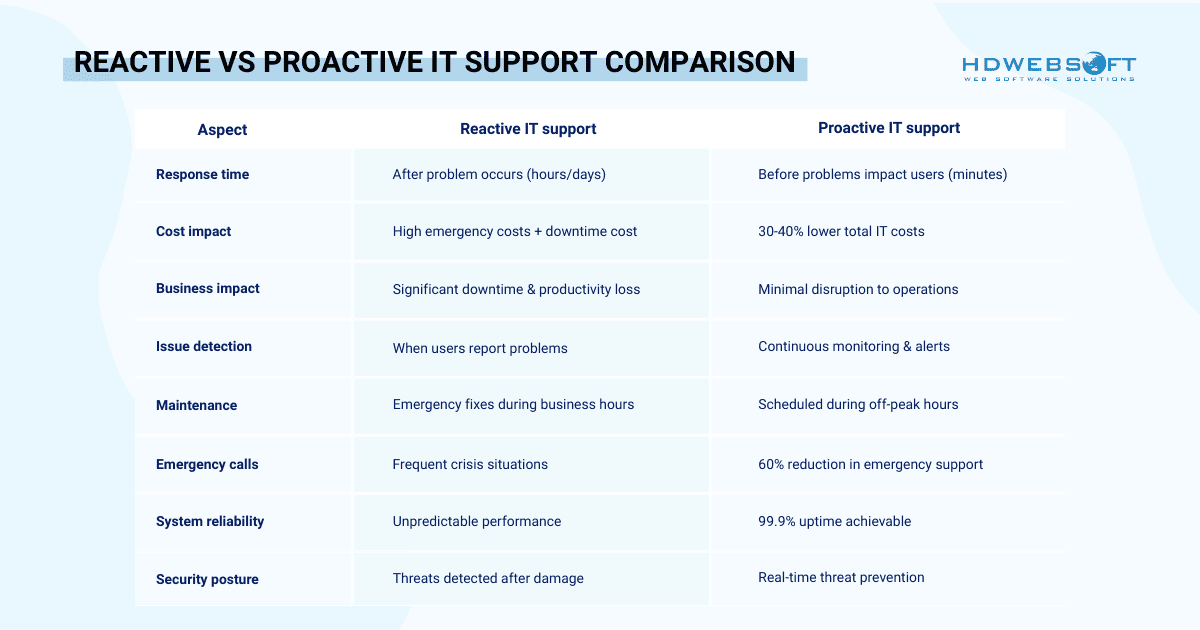
Key Components of IT Support Monitoring
Effective IT monitoring encompasses several critical components that work together to provide comprehensive visibility into your technology infrastructure. Therefore, understanding these elements is essential for implementing a robust monitoring strategy.
Before we head into the details, let’s take a look at the following visual graph of the key components so you know what to expect:
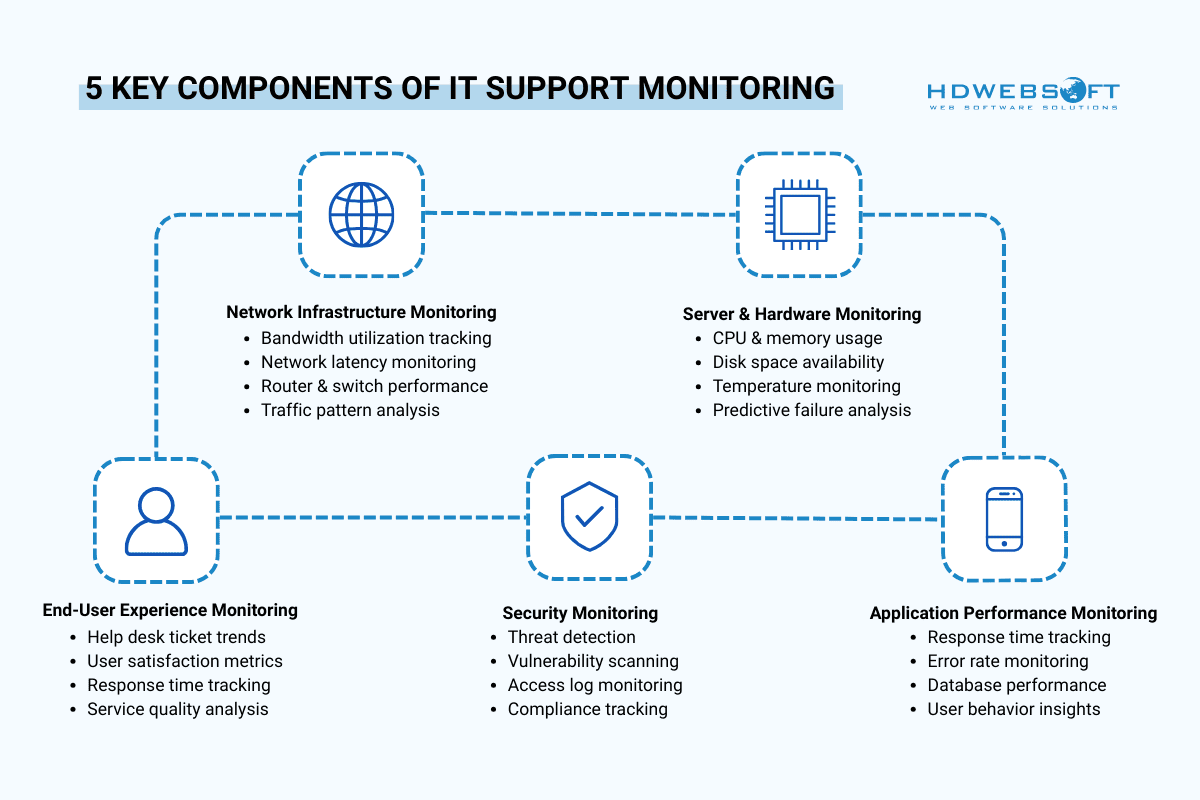
Network Infrastructure Monitoring
This foundational component forms the backbone of any comprehensive IT monitoring system. It tracks bandwidth utilization across all network segments, monitors network latency and connectivity issues, and evaluates critical hardware performance. Additionally, IT support monitoring tools assess traffic patterns to identify potential bottlenecks before they affect user productivity.
Server and Hardware Monitoring
Physical infrastructure represents another vital aspect of IT monitoring services. This component continuously tracks CPU usage, memory consumption, and disk space availability across all servers.
Furthermore, it monitors environmental factors such as temperature and power consumption to prevent hardware failures. Advanced systems even incorporate predictive analytics to forecast potential hardware issues based on performance trends and historical data.
Application Performance Monitoring (APM)
Software performance and user experience take center stage in this monitoring component. It measures application response times and throughput, tracks error rates and system crashes, and monitors database performance to ensure optimal data access speeds.
Plus, Modern APM solutions provide insights into user behavior patterns and application dependencies.
Security Monitoring
Today’s threat landscape has made this component increasingly critical for businesses. It includes continuous threat detection and vulnerability scanning, monitoring of access logs to identify unauthorized attempts, and compliance monitoring. This is all to ensure adherence to industry regulations.
So, outsourced IT support monitoring providers often specialize in this area. It offers round-the-clock security surveillance that many organizations cannot maintain internally.
End-User Experience Monitoring
Finally, end-user experience monitoring tracks the human side of IT performance. This component analyzes help desk ticket trends to identify recurring issues, measures user satisfaction metrics through surveys and feedback systems, and monitors response times for support requests. Therefore, this data proves invaluable for improving overall service quality and user productivity.
Benefits of Professional IT Support Monitoring
Implementing IT support with proactive monitoring delivers significant advantages that extend far beyond simple system uptime. These benefits directly impact your organization’s bottom line and competitive position.
Proactive Issue Resolution
Preventing problems before they impact users stands as perhaps the most valuable benefit of proactive IT support. By identifying issues early, organizations can prevent costly downtime and maintain business continuity. This approach reduces emergency support calls by up to 60% and eliminates the stress and costs associated with crisis management.
Additionally, proactive IT support monitoring enables IT teams to schedule maintenance during off-peak hours, minimizing disruption to business operations.
Cost Reduction
Financial advantages represent another compelling reason to invest in professional IT monitoring services. Organizations typically see a 30% reduction in total IT ownership costs through optimized resource allocation and prevented downtime. Hence, the financial impact becomes even more significant. It’s especially when considering that every hour of downtime can cost businesses thousands of dollars in lost productivity and revenue.
Enhanced Security Posture
Cybersecurity protection has become increasingly important as threats continue to evolve. Proactive IT support systems provide early threat detection capabilities, often identifying security incidents within minutes rather than days or weeks.
Consequently, this rapid response capability, combined with continuous compliance monitoring, helps organizations maintain robust security while meeting regulatory requirements.
Improved Business Continuity
Operational reliability ensures that your organization can maintain operations even when issues arise. Comprehensive monitoring supports better disaster recovery planning by providing detailed insights into system dependencies and recovery priorities.
Furthermore, outsourced IT support monitoring providers often offer guaranteed response times and 24/7 coverage that internal teams cannot match.
Data-Driven Decision Making
Last but not least, strategic insights empower organizations to make informed choices about technology investments and improvements. Detailed performance analytics and reporting provide insights into usage patterns, capacity planning requirements, and optimization opportunities. As a result, this information proves invaluable when planning infrastructure upgrades or evaluating new technology solutions.
IT Support Monitoring Tools and Technologies
The landscape of IT monitoring services has evolved rapidly, offering organizations a wide array of sophisticated tools and technologies to choose from. Selecting the right combination depends on your specific needs, budget, and technical requirements.
Popular Monitoring Platforms
Enterprise solutions dominate the market with comprehensive platforms like SolarWinds, PRTG, and Nagios. These platforms offer extensive customization options and can monitor virtually every aspect of your IT infrastructure. Meanwhile, cloud-based monitoring tools have gained popularity due to their scalability and reduced maintenance requirements. These solutions often provide faster deployment times and automatic updates, making them attractive for organizations with limited IT resources.
In addition, open-source alternatives like Zabbix and Icinga offer cost-effective options for organizations with internal technical expertise. However, these solutions typically require more configuration time and ongoing maintenance compared to commercial platforms.
Automation and AI Integration
Cutting-edge technology represents the future of IT support monitoring. Modern systems incorporate automated alerting that can distinguish between critical issues and minor anomalies. Tools like Datadog and New Relic provide anomaly detection and intelligent notifications. Meanwhile, PagerDuty ensures incidents are escalated to the right teams without overwhelming them. So, they help reduce alert fatigue while ensuring important problems receive immediate attention.
Moreover, machine learning algorithms analyze historical data to predict potential failures and recommend preventive actions. Solutions such as Dynatrace and Splunk ITSI use AI-driven analytics to forecast disruptions, enabling teams to act before outages occur.
Furthermore, self-healing systems take automation even further by automatically resolving common issues without human intervention. Platforms like BMC Helix, or ServiceNow ITOM orchestrate automated workflows that detect and remediate problems in real time.
In all, these capabilities are particularly valuable in outsourced IT monitoring scenarios, where rapid response times are essential for maintaining service level agreements.
Integration Capabilities
Seamless connectivity ensures that IT support monitoring tools work harmoniously within your existing technology ecosystem. Modern platforms offer robust APIs that connect with ITSM systems, help desk software, and other business applications. Centralized dashboards provide unified views of system performance, making it easier for IT teams to identify trends and coordinate responses.
Outsourcing IT Support Monitoring: When and Why
Many organizations eventually reach a point where internal resources cannot adequately support their IT monitoring requirements. Recognizing when to seek external help can prevent costly mistakes and service degradation.
Signs Your Business Needs External Monitoring
- Resource limitations often surface as organizations expand or face new challenges.
- Limited internal IT staff is the most common trigger. This is especially true when teams cannot provide 24/7 coverage or lack expertise in specialized technologies.
- Growing infrastructure complexity adds to the challenge, as cloud services, remote work tools, and advanced security systems increase monitoring demands.
- Round-the-clock monitoring needs push many organizations toward outsourced IT support monitoring solutions.
- Cost-effective 24/7/365 coverage is difficult for internal teams, particularly for smaller organizations with constrained budgets.
Advantages of Outsourced Monitoring
Professional services extend well beyond simple cost savings. External providers offer access to specialized expertise that would be expensive to develop internally. It includes certified professionals with experience across multiple industries and technologies.
Additionally, IT monitoring services providers also offer cost-effective 24/7 coverage through distributed teams and advanced tools. Indeed, that would require significant capital investment for internal implementation.
Furthermore, outsourced IT monitoring providers typically offer access to enterprise-grade monitoring tools and technologies. Those are what smaller organizations could not justify purchasing independently. Notably, these providers also stay current with the latest threats and technologies, ensuring that your monitoring capabilities remain cutting-edge.
Choosing the Right IT Support Monitoring Partner
Careful evaluation of potential IT support monitoring providers’ capabilities and track record is essential for success.
- Service level agreements (SLAs) should clearly define response times, resolution targets, and performance metrics.
- Reporting and communication standards ensure that you receive regular updates on system performance and any issues that arise.
- Industry experience and relevant certifications indicate that providers understand your specific challenges and compliance requirements.
Most importantly, evaluate providers’ ability to scale services as your organization grows and their integration capabilities with your existing systems.
Lastly, understanding the typical implementation process helps set realistic expectations when partnering with IT monitoring services providers. Check it out:
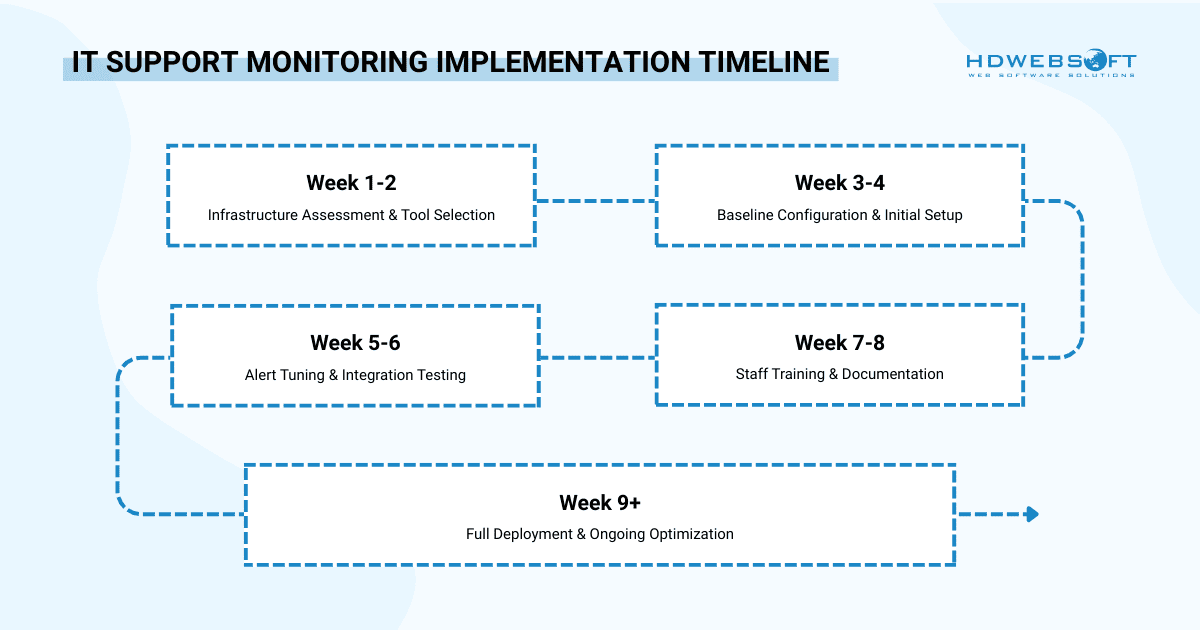
Common Challenges and Solutions
Even well-implemented IT support with proactive monitoring systems can face challenges that reduce their effectiveness. Understanding these common issues and their solutions helps organizations maximize their monitoring investment.
Alert Fatigue and False Positives
Excessive notifications represent one of the most significant challenges in network monitoring. When systems generate too many alerts, IT staff may begin ignoring notifications or delaying responses, potentially missing critical issues. That’s why this problem often stems from improperly configured thresholds or overly sensitive monitoring rules.
Therefore, the IT support monitoring solution involves fine-tuning notification settings based on actual system behavior and business impact:
- Implementing intelligent filtering that prioritizes alerts based on severity and business relevance.
- Regularly review alert patterns and adjust configurations to minimize false positives.
Here’s a real-world example that demonstrates how effective monitoring configuration reduces alert noise while maintaining system protection over time:
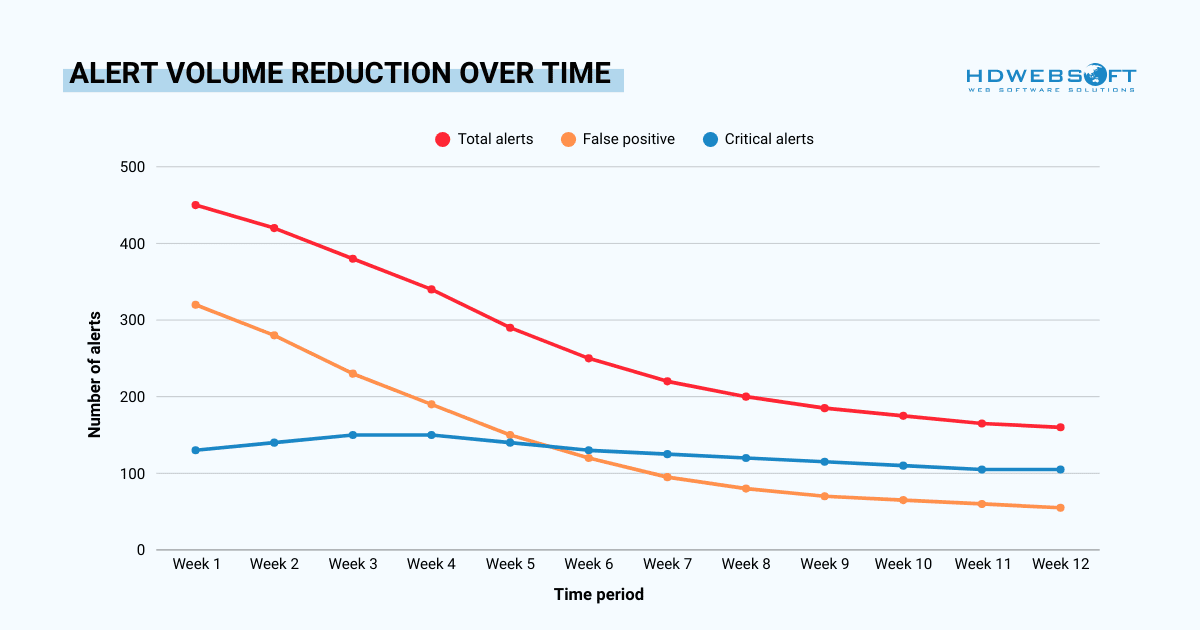
Integration Complexity
Technology diversity often challenges organizations with varied IT environments. Different monitoring tools may use incompatible data formats or communication protocols. Hence, it becomes difficult to create unified views of system performance. This fragmentation can lead to blind spots and delayed incident response.
Planning for seamless tool integration from the beginning helps prevent these issues:
- Standardizing monitoring protocols across all systems and selecting tools with robust API capabilities. Ultimately, it ensures that data can flow freely between different components.
- Notably, IT monitoring services providers often have experience integrating disparate systems and can provide valuable guidance during implementation.
Scalability Concerns
Growth limitations become apparent as organizations expand or add new technologies. IT support monitoring systems that work well for small environments may struggle to handle increased data volumes or additional monitoring points. So, this challenge is particularly common with on-premises solutions that require hardware upgrades to support growth.
Thus, choosing scalable monitoring solutions from the beginning helps avoid these limitations:
- Cloud-based platforms typically offer the most flexibility for growth,
- The outsourced IT providers can scale their services alongside your business needs without requiring additional investment in infrastructure or staff.
Conclusion
In essence, IT support monitoring has become essential for modern businesses seeking reliable, secure operations. The comprehensive components work together to prevent costly downtime and enhance performance. For many organizations, outsourced IT monitoring provides the most practical solution, offering specialized expertise without internal overhead costs.
As you evaluate your monitoring needs, consider whether your current approach adequately protects your technology infrastructure. HDWEBSOFT offers comprehensive software outsourcing services that can transform your business operations while reducing costs and improving reliability.








